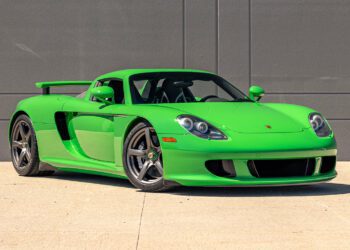Driving fast is fun, but stopping faster is more logical. Porsche designs their brakes using the best materials available. Their benchmark for each model is for the brakes to handle four times the engine’s power output. In order to achieve this, the rotors and pads are known to be a little noisy at low speeds. Because every other system is also over-engineered, brake noise concerns are a common question for the service department.

So Porsche decided to explain the nature of the noise in a YouTube video. Since 1948, Porsche engineers have forced the industry to improve by always staying ahead in vehicle refinement. All the annoying factors of a car are combined into NVH, or Noise-Vibration-Harshness. This field of study involves shakes, rattles, and every sensation the passengers might encounter.
For an American anecdote, in the days before powerful computers, this process was trial and error. One of the most famous instances was the first generation Camaro convertible. Above 30 mph the cars would develop a harmonic vibration, so engineers installed oil-filled cans in the trunk. The “cocktail shaker” was often removed by owners who wanted more trunk space, and they are hard to find for those looking to restore their cars.
70 Years Ago the First Porsche was Born
Porsche has many valid reasons why their brakes make noise, but they omit the most obvious…If you want to keep your brakes nice & quiet, they need regular exercise. Your ABS system needs to be activated to keep the solenoids and pistons in working order, so find a desolate parking lot and give your middle pedal the middle finger. This applies to every new & used sports car, so tell us what stops your daily driver in the comments below and stay with us for all your Porsche news.
[button color=”red” text=”white” url=”http://www.dupontregistry.com/autos/results/porsche” window=”_blank”]Browse Porsche For Sale[/button]




